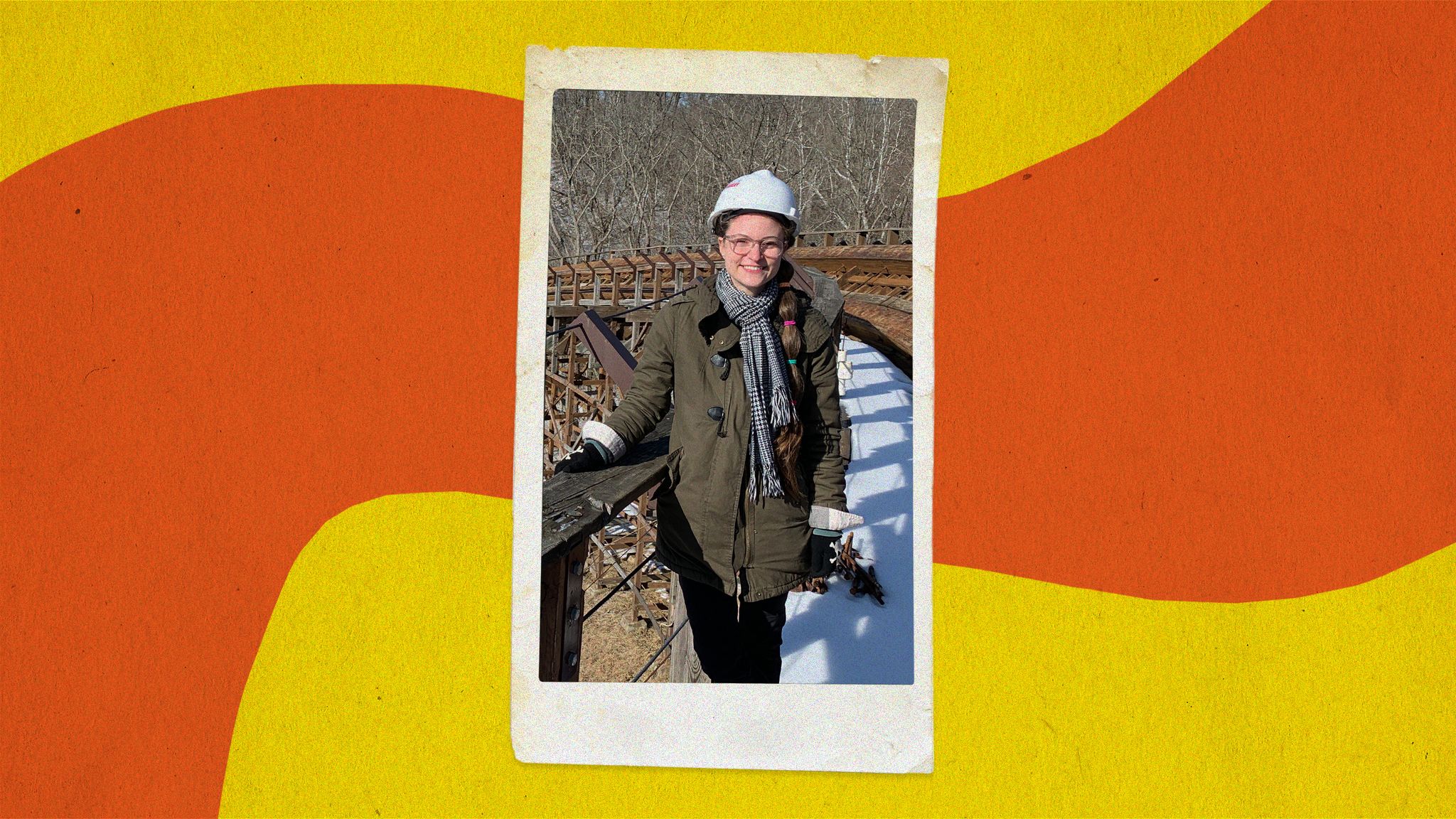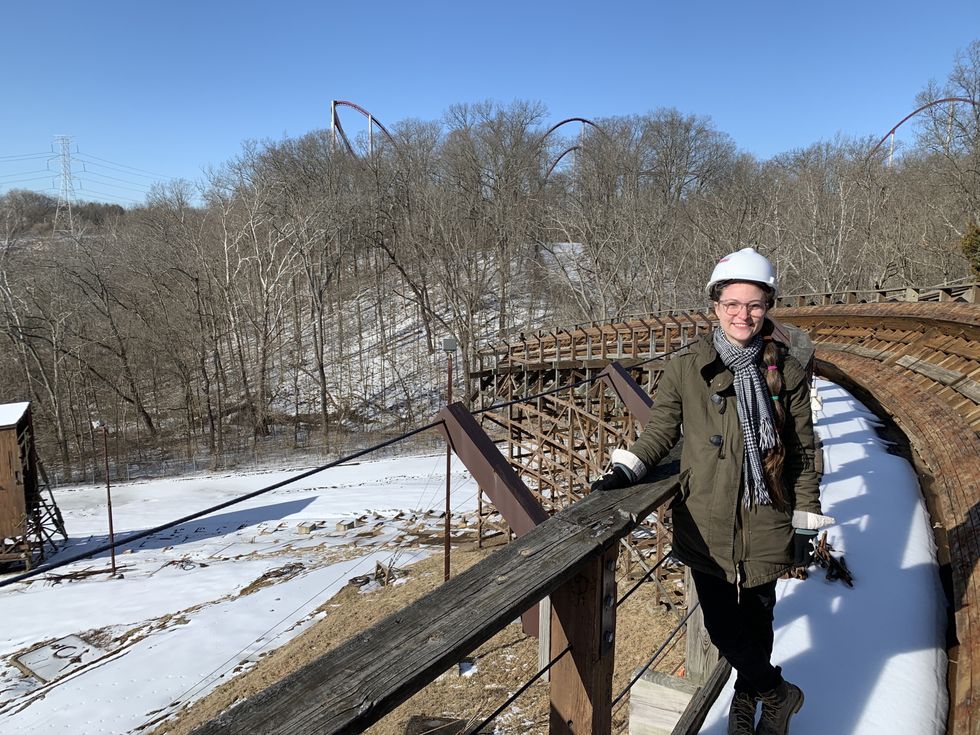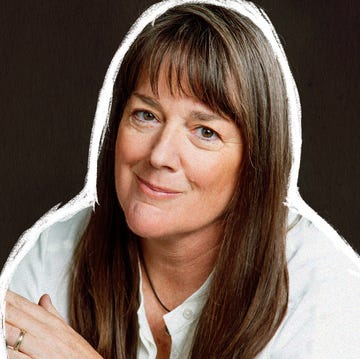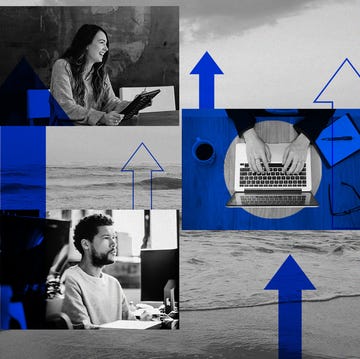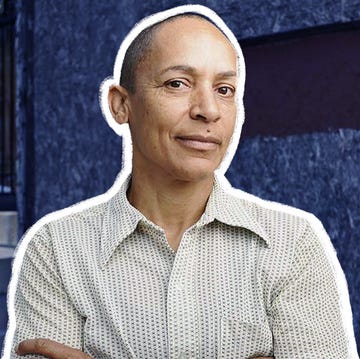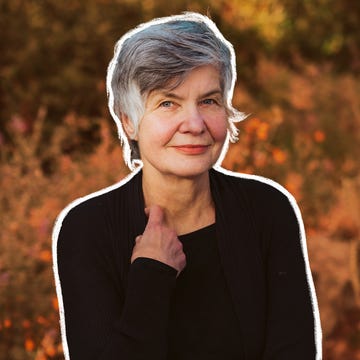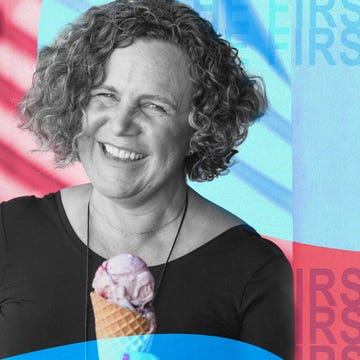In Shondaland’s Joy Makers series, we spotlight creative curators who operate behind the scenes to inspire moments of elation. Their handiwork illuminates pathways to delightfulness, and their one-of-a-kind insights help us find happiness in our own lives. In this month’s installment, we explore the joy of thrills.
Growing up in Pennsylvania, Hunter Lawrence visited Kennywood park each year for eye-popping, scream-inducing happiness inspired by the theme park’s vast thrillscape of roller coasters about an hour away from where she lived. When she was a teenager, she begged her parents to allow her to work at the historic 80-acre park.
“A lot of the other kids that worked there lived in the town that Kennywood is situated in,” says Lawrence, now a 26-year-old coaster engineer. “They couldn’t fathom that someone would want to drive almost an hour to get to the park to work. But I did.”
Lawrence, who joined the American Coaster Enthusiasts fan group in high school, had always been fascinated by the giant spectacles towering in the sky. When she was on duty in the operator’s booth at Phantom’s Revenge, Kennywood’s largest steel coaster, she’d forgo playing the prerecorded spiels in favor of personal introductions. “I would tell people about the ride,” she says, “and because I was a nerd and specifically interested in the park, I added a little bit more to people’s days by telling them random facts about the park.”
Kennywood, which opened in 1899, is one of the only theme parks in the area to survive the Great Depression. It started as a “picnic park” or “trolley park,” an outdoor venue at the end of a local streetcar line that folks would ride to on weekends to unwind and gather. “I was just looking through old photos from my parents,” Lawrence recalls, “and I found a strip of pictures of them at Kennywood in the ’70s. Keeping those places alive so that memories can still be made [there] is a cool feeling.”
As she grew older, Lawrence became increasingly interested in how coasters were designed and constructed with a particular fascination in wooden coasters, the old-school attractions made primarily of lumber. “It’s the feel of riding, the smell of the grease, the sound of going up the lift hill, the bubbly feeling you get when you’re riding and experiencing all the forces,” she says. “It’s important to me to keep them from dying out. There’s thousands of coasters in the world, but there are less than 200 wooden roller coasters operating.”
Lawrence graduated from Carnegie Mellon University with a civil engineering degree in 2018. Now based in Cincinnati, Ohio, she works on wooden coasters with The Gravity Group. Between her current role and her first job out of school at Great Coasters International, Lawrence has worked on attractions such as the Tonnerre 2 Zeus at Parc Astérix in France, The Beast at Kings Island near Cincinnati, and the Texas Stingray at SeaWorld San Antonio — a 100-foot twister that opened in 2020.
The small company, founded by a group of veteran wooden roller-coaster designers in 2002, is one of very few that work as an outsider contractor on wooden coasters at theme parks. The four owners handle the design process, while Lawrence tracks pieces, oversees production, and inspects sites to ensure everything runs smoothly. “It’s very collaborative,” she notes. “A lot of hands touch these projects because the scale of what needs to be done is this huge, giant ride.”
While most riders simply hop on a coaster and trek up that first hill without considering the minute details, it’s Lawrence’s passion — and her job — to pay attention to every single bolt and plank. “These train cars have hundreds of parts,” she says. “All of the parts have been designed or redesigned. All of the materials are chosen very specifically to be safe and optimized in different ways.”
With refurbishment projects, Lawrence feels the most fulfilled. “We get the chance to preserve something that already exists and to make sure that parks don’t destroy their wooden coasters, which unfortunately does happen,” she says. “Wood is such a temperamental material. It’s not like steel or concrete. It’s almost like it’s still alive.” The natural material shrinks, expands, and rots. Over time, the tracks become worn out and bumpy. Lawrence says if parks can’t afford the maintenance — or don’t feel that it’s worth it — they’re usually torn down.
Today, Lawrence is working to help protect wooden coasters for generations to enjoy in the future. The Gravity Group developed a proprietary system that uses precisely precut wooden tracks to alleviate builders from needing to make and shape tracks in difficult and dangerous positions atop coasters. The goal is to give parks an option for easily retracking sections of their rides.
Kings Island’s The Beast, which opened in 1979, is one of the first coasters to employ the new precut track system. In fact, the 43-year-old ride — currently the longest wooden coaster in the world — is Lawrence’s favorite refurbishment project. “It’s cool to say that we’ve been able to do work on it to preserve it,” she says, “so that it can continue to hold that spot.”
As far as how Lawrence and her colleagues create grin-worthy intensity for riders, the answer is simple: science. A delicate balance of G-forces — making riders feel blissfully weightless or pushing them dramatically into their seats — work in tandem to inspire a kinetic range of feelings. “At the end of the day, they are big structures, and they’re big machines,” Lawrence says. “In order to make something that gives joy, happiness, and excitement to people, it takes a lot of discipline behind the scenes. For me, it’s worth it because I remind myself of what the end product is going to be.”
Within the industry, Lawrence herself is defying gravity — and hopes to inspire others as well. According to 2022 data from Zippia, the average age of a coaster engineer is 47, and 94 percent identify as men. “I can’t say that I’m contributing a basic need to society,” the 26-year-old acknowledges of her unique career path. “Sometimes I go down the rabbit hole, and I’m like, ‘What am I even doing?’ But then, I think, even through the terrible times in the world, at some point, humans started designing giant things just for fun.”
Hunter Lawrence’s Three Tips for the Best Theme Park Experience
Ride in the front and back seats
“You have to get both experiences. On a literal level, you seriously do get the most extreme forces at either end.”
Go for a spin at night
“Even if you’re tired, don’t leave the park early. Don’t underestimate night rides. Sometimes rides feel completely different at night.”
Learn the history
“Some parks have more historic rides than others. Appreciating history is important. They might have a building that’s been there since it opened or a carousel from the early 1900s.”
Mia Brabham is a staff writer at Shondaland. Follow her on Twitter at @hotmessmia.
Get Shondaland directly in your inbox: SUBSCRIBE TODAY
